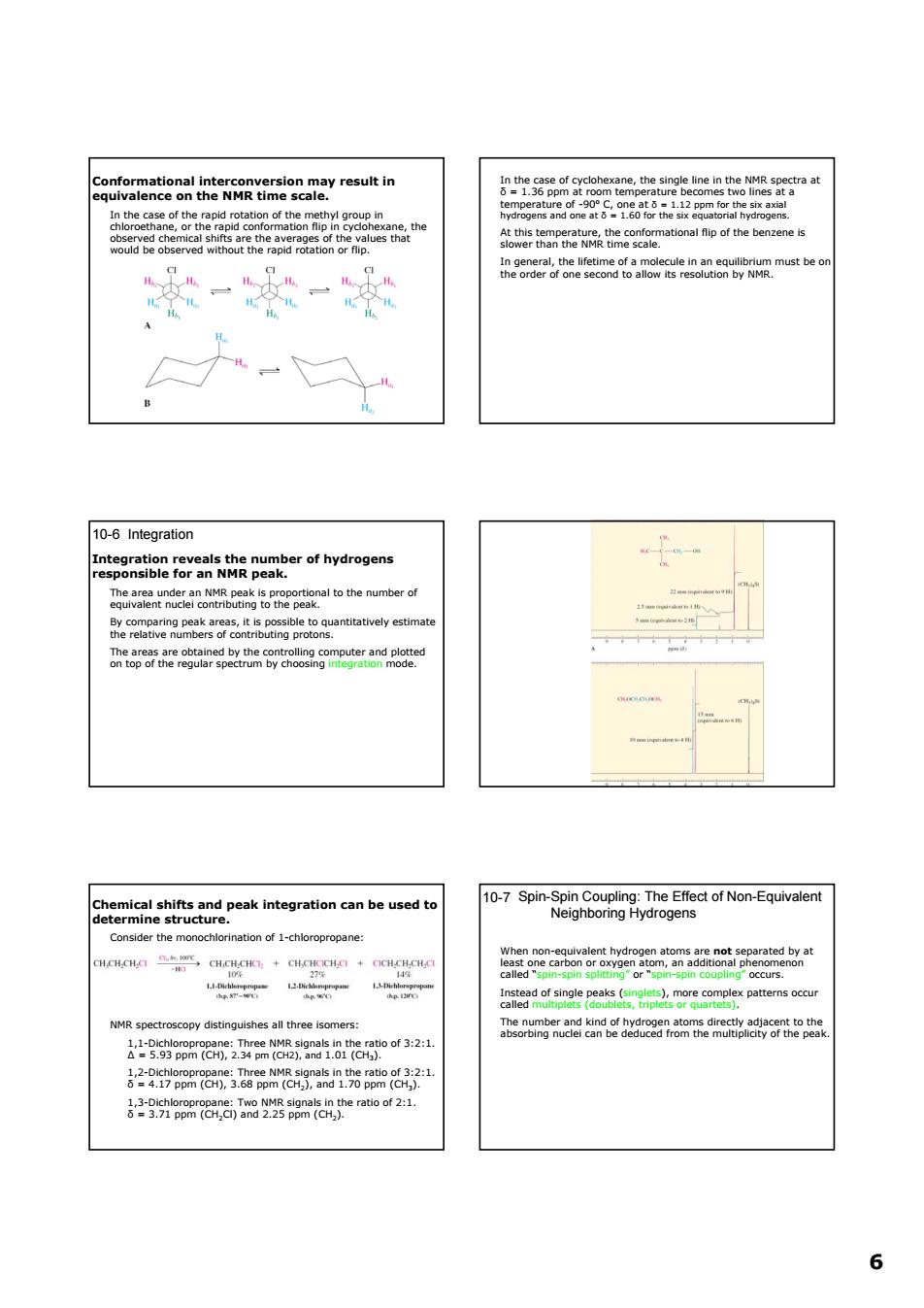正在加载图片...

ra a 安一安一的 he2oeew8eoe2eesnea5yRete 10-6 Integration Inte for pof hydrogens eaiaentneicowRoeatioareesaltothenumberol metopo0iogrepbxtanSrceo2agometeranans Smlehinpeakintegraionanbeusadto 1o7spn8eSoPg2heg5eoonEquwaen if1-chore fnecmttec NMR spectroscopy distinquishes all three isomers: 发 pm (CHCi)and 2.25 ppm (C) 6 6 Conformational interconversion may result in equivalence on the NMR time scale. In the case of the rapid rotation of the methyl group in chloroethane, or the rapid conformation flip in cyclohexane, the observed chemical shifts are the averages of the values that would be observed without the rapid rotation or flip. In the case of cyclohexane, the single line in the NMR spectra at δ = 1.36 ppm at room temperature becomes two lines at a temperature of -90o C, one at δ = 1.12 ppm for the six axial hydrogens and one at δ = 1.60 for the six equatorial hydrogens. At this temperature, the conformational flip of the benzene is slower than the NMR time scale. In general, the lifetime of a molecule in an equilibrium must be on the order of one second to allow its resolution by NMR. 10-6 Integration Integration reveals the number of hydrogens responsible for an NMR peak. The area under an NMR peak is proportional to the number of equivalent nuclei contributing to the peak. By comparing peak areas, it is possible to quantitatively estimate the relative numbers of contributing protons. The areas are obtained by the controlling computer and plotted on top of the regular spectrum by choosing integration mode. Chemical shifts and peak integration can be used to determine structure. Consider the monochlorination of 1-chloropropane: NMR spectroscopy distinguishes all three isomers: 1,1-Dichloropropane: Three NMR signals in the ratio of 3:2:1. Δ = 5.93 ppm (CH), 2.34 pm (CH2), and 1.01 (CH3). 1,2-Dichloropropane: Three NMR signals in the ratio of 3:2:1. δ = 4.17 ppm (CH), 3.68 ppm (CH2), and 1.70 ppm (CH3). 1,3-Dichloropropane: Two NMR signals in the ratio of 2:1. δ = 3.71 ppm (CH2Cl) and 2.25 ppm (CH2). Spin-Spin Coupling: The Effect of Non-Equivalent Neighboring Hydrogens 10-7 When non-equivalent hydrogen atoms are not separated by at least one carbon or oxygen atom, an additional phenomenon called “spin-spin splitting” or “spin-spin coupling” occurs. Instead of single peaks (singlets), more complex patterns occur called multiplets (doublets, triplets or quartets). The number and kind of hydrogen atoms directly adjacent to the absorbing nuclei can be deduced from the multiplicity of the peak